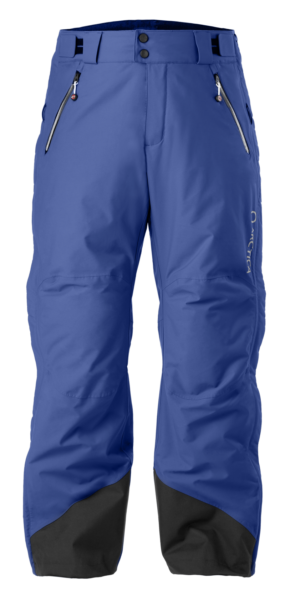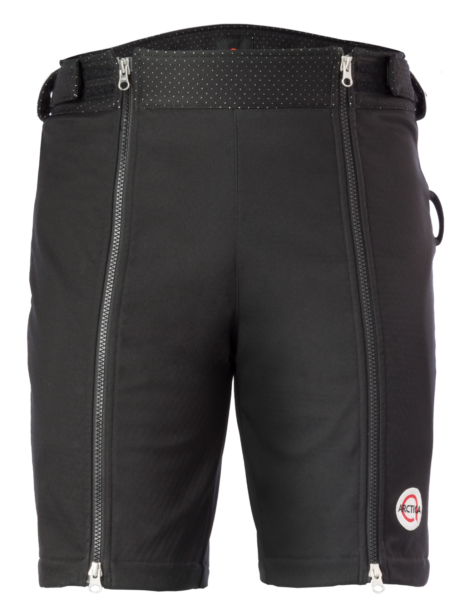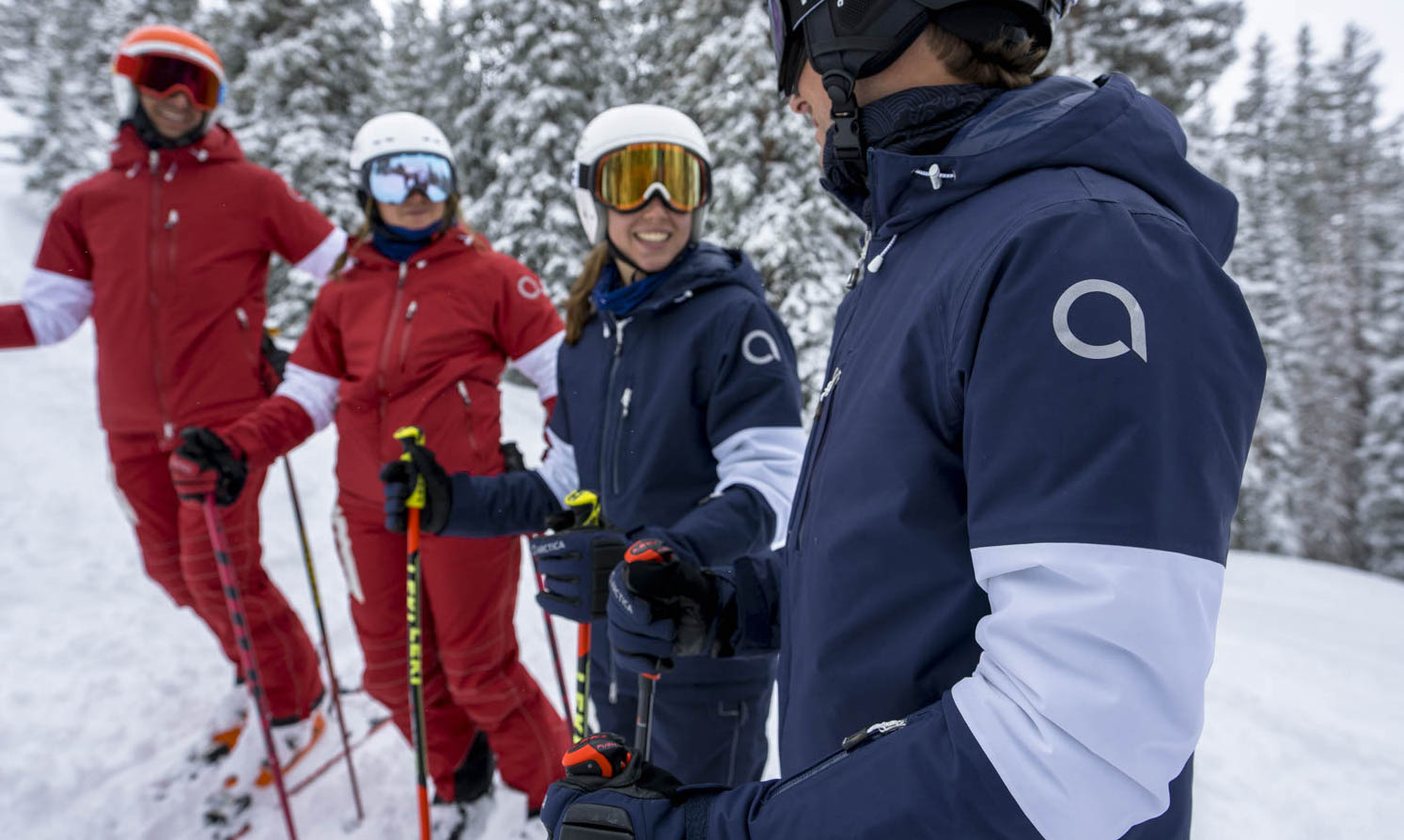Performance fabrics are very technical and product information labels can be confusing. Big brand name performance fabrics like Gore-Tex®, Pertex®, Polartec® NeoShell® and eVent® have rigorous production standards and carry a hefty price tag for their use. Because of this, almost every manufacturer has their own proprietary version of the same products. We are no different. So here is some information about Arctica fabrics.
In order to understand our products better, you first need to understand the technical jargon.
Technical Fabric Terminology
Breathable – Breathability is the measure of how many grams (g) of water vapor can pass through a square meter (m²) of the fabric from the inside to the outside in a 24 hour period. 10k/10,000g or 20k/20,000g. The larger the number, the more water vapor that has passed in the 24 hour time period.
Cire – A pressure and heat treating finishing process for nylon and polyester outerwear fabrics. This process gives the fabric a wet/polished look and makes it more water resistant.
Coating – To make it waterproof, a fabric can be coated with ePTFE (expanded polytetrafluoroethylene aka Teflon®) or PU (polyurethane). This makes the fabric very waterproof, but lower breathability in comparison to a membrane laminate.
Critically Taped – A critically taped garment only has seam tape on high exposure areas of the garment. Like the neck, shoulders and chest for a jacket and the butt and knees of a pair of pants.
Durable Water Repellent (DWR) – A durable water repellent is a coating applied to the outside of a face fabric of a garment to prevent it from becoming saturated with water.
Face Fabric – The face fabric is the outer layer of a waterproof/breathable fabric that protects and looks stylish. Because it itself is not waterproof, it has a durable water repellant (DWR) applied so it does not soak up water.
Fully Taped – A fully taped garment has seam tape on every single seam. We fully tape all Arctica garments.
Membrane – The membrane is the waterproofing layer of a waterproof fabric. Usually made of ePTFE or PU (see coating) and laminated to the face fabric. The membrane has tiny holes in it that are too small to let water in, but large enough to let vapor out.
Seam Sealed – In the manufacturing process the sewing machine needle creates tiny holes around all the seams. These holes are large enough for water to pass through. Therefore, to waterproof the garment, you seam seal it with heat treated waterproof tape.
Waterproof – Manufacturer’s describe the waterproof-ness of a fabric using a number in millimeters (mm). 10k/10,000mm or 20k/20,000mm. To measure this, manufacturer’s place a square tube with an inner dimension of 1″ x 1″ over the piece of fabric and fill it with water. The amount this tube is filled before water begins to leak through the fabric is it’s waterproof rating. For a waterproof rating of 10,000mm, the tube is filled to 10,000mm (32.8 feet!) before the fabric wets through. The higher the number the more waterproof the fabric.
For a more technical information, read evo.com’s Waterproof Ratings & Breathablity Guide.
Arctica Fabrics
When creating the Arctica fabrics for skiing and ski racing, we skillfully balance protection from rain and snow with the ability to let water vapor (perspiration) escape. We feel we have done a good job achieving this balance in addition to keeping an eye on cost. To help you better understand our products and how they can best suit you, here’s a glossary of terms for Arctica fabrics.
Dura 10 – Dura 10 is a tough, durable nylon fabric with a waterproof-breathable coating and a durable water repellent finish. This fabric performs at a 10,000mm waterproof/10,000g breathability rating and is similar to Karbon’s Karbonite 10000. We use this fabric in our Side Zip Pants 2.0. It is perfect for the rigors of race training.
Dura Lite – Dura Lite is a fine, lightweight, yet highly durable microfiber nylon fabric. It has a double cire finish and DWR water repellent coating. As a result of these treatments, it is an amazing windproof, down proof, water repellent and breathable fabric. We use Dura Lite for all of our Speed Freak Hoodies.
Flex 20 – Our Flex 20 fabric is a unique combination of nylon and lycra. It allows movement in any direction and is incredibly durable and lightweight. A 20k minimum waterproof and breathability performance rating make this fabric ideal for all mountain pursuits. This fabric is similar to the Dura Max 200 fabric from Sync. We currently use it in our GT Jacket and GT Stretch Side Zip Pants.
Flex Shell – Flex Shell is our proprietary, technical 3-layer fabric that we use on the Black Kat Stretch Shorts. It is a soft, wicking polyester grid fleece with an inner micro-porous membrane. The outer layer of this fabric is tough, durable nylon twill. This fabric is similar to that used in the Halti training shorts and is perfect for high impact race training.
Race Flex – Race Flex is our proprietary, technical 3-layer all way stretch fabric. The outer layer is a tightly knit, high stretch polyester. The inner layer is a soft, wicking polyester combined with an inner micro-porous membrane. We use this fabric on all of our speed suits and it meets all FIS requirements for air porosity.
More information
Keep an eye out for our follow up on Arctica’s performance insulations called Arctica Insulation Explained.









What is the thickness of your racing suit? and is it the same in Junior and adult sizes?
All of the Arctica ski racing suits (adult and junior) are made from a high-quality 3-layer fabric that exceeds the FIS 30ml air porosity test. The fabric is a durable, thick feeling fabric, that is comparable to the other major brands. We use the same fabric for the Arctica adult and junior race suits so they are both the same thickness and all are FIS approved.